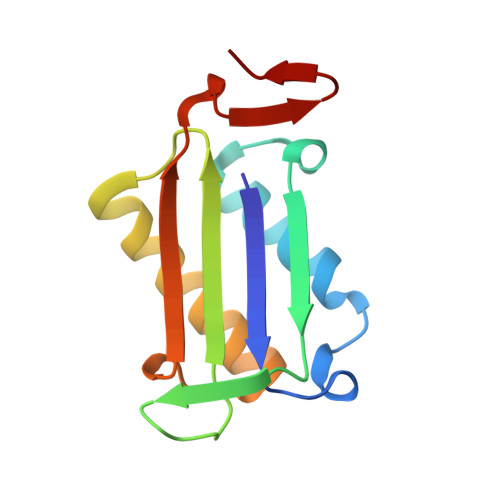Multiple binding modes of isothiocyanates that inhibit macrophage migration inhibitory factor
Spencer, E.S., Dale, E.J., Gommans, A.L., Rutledge, M.T., Vo, C.T., Nakatani, Y., Gamble, A.B., Smith, R.A., Wilbanks, S.M., Hampton, M.B., Tyndall, J.D.(2015) Eur J Med Chem 93: 501-510
- PubMed: 25743213
- DOI: https://doi.org/10.1016/j.ejmech.2015.02.012
- Primary Citation of Related Structures:
3WNR, 3WNS, 3WNT, 4OSF - PubMed Abstract:
Macrophage migration inhibitory factor (MIF) is a pleiotropic cytokine that has roles in the innate immune response, and also contributes to inflammatory disease. While the biological properties of MIF are closely linked to protein-protein interactions, MIF also has tautomerase activity. Inhibition of this activity interferes with the interaction of MIF with protein partners e.g. the CD74 receptor, and tautomerase inhibitors show promise in disease models including multiple sclerosis and colitis. Isothiocyanates inhibit MIF tautomerase activity via covalent modification of the N-terminal proline. We systematically explored variants of benzyl and phenethyl isothiocyanates, to define determinants of inhibition. In particular, substitution with hydroxyl, chloro, fluoro and trifluoro moieties at the para and meta positions were evaluated. In assays on treated cells and recombinant protein, the IC50 varied from 250 nM to >100 μM. X-ray crystal structures of selected complexes revealed that two binding modes are accessed by some compounds, perhaps owing to strain in short linkers between the isothiocyanate and aromatic ring. The variety of binding modes confirms the existence of two subsites for inhibitors and establishes a platform for the development of potent inhibitors of MIF that only need to target one of these subsites.
Organizational Affiliation:
Centre for Free Radical Research, Department of Pathology, University of Otago, PO Box 4345, Christchurch 8140, New Zealand.


















